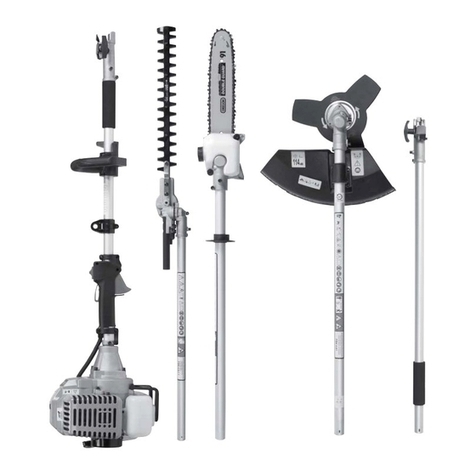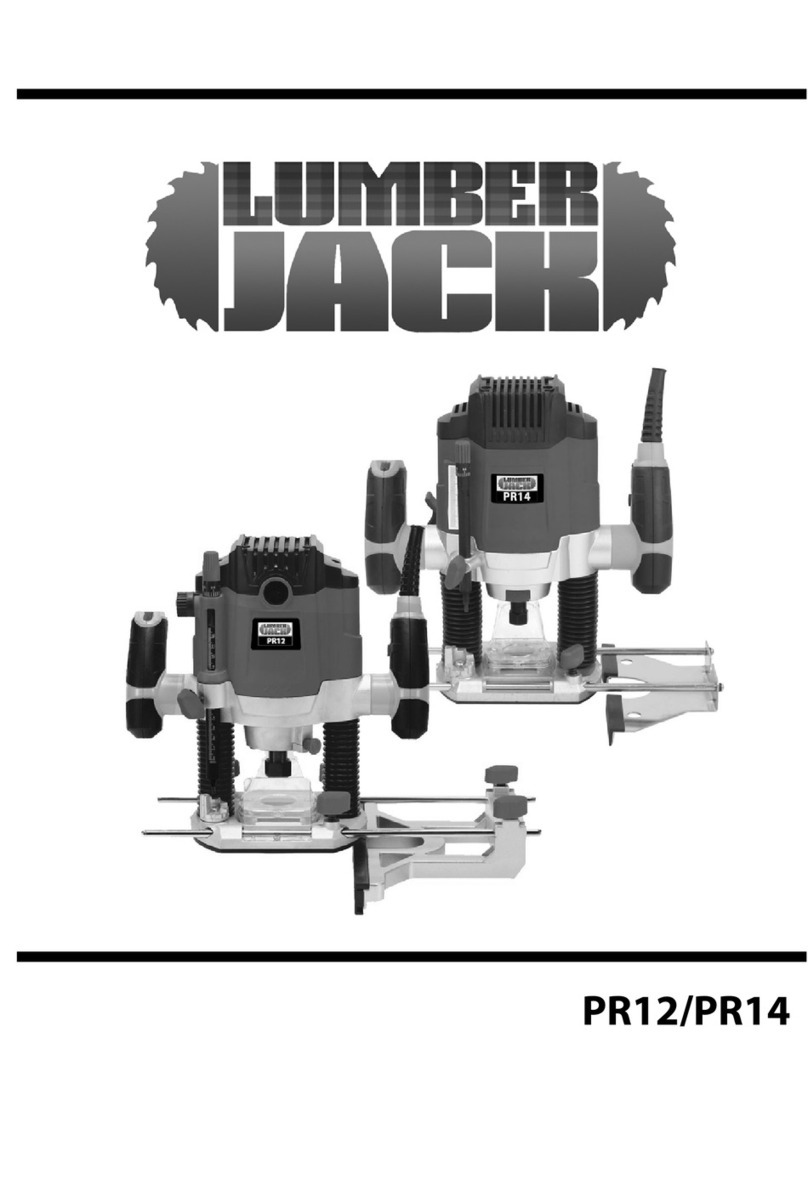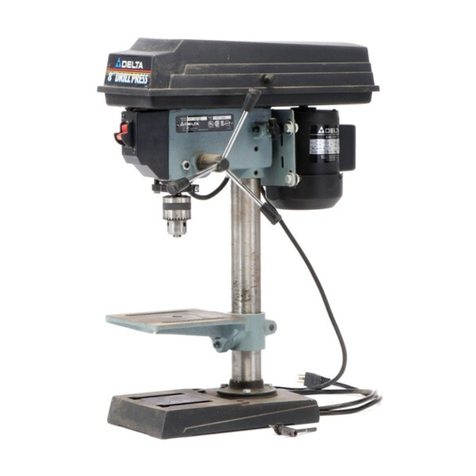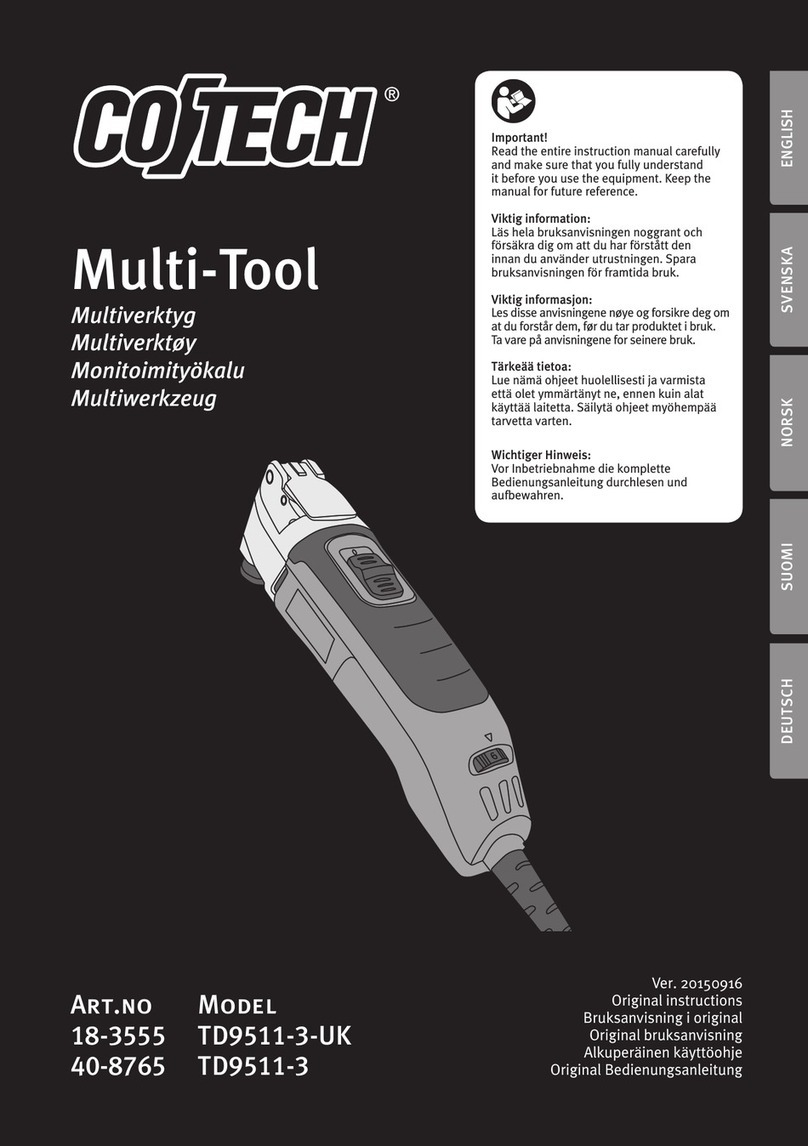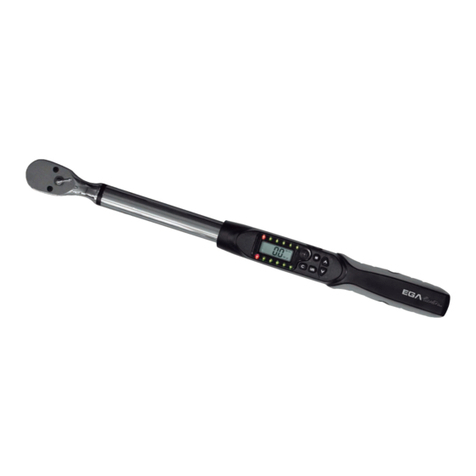BRAMIDAN X Series User manual

Operating
instructions
Bale press
X-series
Manual no. 7995-014
Version 01-05-2012
USA - English edition
(800) 955-0866
www.BATC-Compacts.com


Indholdsfortegnelse USA.fmBale press X-series
Table of contents
1 EU conformity declaration ........................................................................................................ 1
2 Conditions ................................................................................................................................ 2
Explanation of symbols ..................................................................................................... 2
3 Personal Safety ........................................................................................................................ 3
4 Use and function....................................................................................................................... 5
Bale size ........................................................................................................................... 5
Worth knowing .................................................................................................................. 6
5 Transport.................................................................................................................................. 7
Lashing ............................................................................................................................. 7
Centre of gravity ............................................................................................................... 8
The bale press should not be tipped over on its side ....................................................... 9
Transport using a fork-lift truck, etc. ................................................................................. 9
Transport using a crane .................................................................................................. 10
Moving an installed bale press ....................................................................................... 10
6 Installation ............................................................................................................................. 11
Indoor or outdoor location .............................................................................................. 11
Clearances and working area .......................................................................................... 12
Connection ...................................................................................................................... 13
Single phase motor with socket ...................................................................................... 13
Three phase motor with socket ...................................................................................... 13
Three phase motor without phase inverter / socket ........................................................ 14
7 Cords, straps, or steel wire .................................................................................................... 15
8 Operating principles ............................................................................................................... 16
Power interruption .......................................................................................................... 16
Emergency stop ............................................................................................................. 16
The start button .............................................................................................................. 16
Two-hand control ............................................................................................................ 16
The bale ejection is blocked ........................................................................................... 16
Steel wire (optional equipment) ...................................................................................... 16
Additional functions ........................................................................................................ 17
Problems with cords, straps, or steel wire ...................................................................... 18
9 The Operating Panel .............................................................................................................. 19
Description ...................................................................................................................... 19
Push buttons with light signal ......................................................................................... 19
The function of the push buttons .................................................................................... 20

Indholdsfortegnelse USA.fmBale press X-series
10 Mounting cords, straps, or steel wire ................................................................................... 21
Cords or straps ............................................................................................................... 21
Steel wire ........................................................................................................................ 23
11 Filling and compression ....................................................................................................... 24
Distribution of waste ....................................................................................................... 24
Compression .................................................................................................................. 24
Finishing the bale prematurely ....................................................................................... 25
Cancelling of finishing the bale prematurely ................................................................... 25
12 Binding.................................................................................................................................. 26
Cords or straps ............................................................................................................... 26
Steel wire ........................................................................................................................ 28
13 Ejecting the bale ................................................................................................................... 31
14 Maintenance......................................................................................................................... 33
Daily check ..................................................................................................................... 33
Weekly check ................................................................................................................. 33
Biannual check ............................................................................................................... 34
Annual check .................................................................................................................. 34
Damage to paintwork ...................................................................................................... 34
Cleaning ......................................................................................................................... 35
Ordering spare parts ....................................................................................................... 35
Disposal .......................................................................................................................... 35
15 Troubleshooting ................................................................................................................... 36
The press does not start ................................................................................................. 36
The bale press cannot start and the start button is flashing ........................................... 37
The bale press is very noisy ........................................................................................... 37
The press cannot eject the bale ..................................................................................... 38
Leakage .......................................................................................................................... 38
16 Checklist for safety check .................................................................................................... 39
17 Spare parts .......................................................................................................................... 43
18 Electrical diagram (located in the switch case) .........................................................................
19 Hydraulic diagram (located in the switch case) ........................................................................

EF Declaration E USA.fm • Page 1Bale press X-series
Manufacturer: Bramidan A/S
Industrivej 69
DK-6740 Bramming
Telephone: +45 75 17 32 66
Fax: +45 75 17 31 77
Internet: www.bramidan.com EU Declaration of Conformity R205-E
Hereby declares that
Machine: Bale press belonging to the X-series
was manufactured in conformity with:
•ANSI Z245.5-2008 Baling Equipment - Safety Requirements.
•The provisions of the EU Machinery Directive 2006/42/EC with later amendments, with special reference
to Annex II, part A and Annex I of the Directive, on essential safety and health requirements in relation to
the construction and manufacture of machines.
•The provisions of the EU EMC Directive 2004/108/EC as later amended.
•The following standards:
EN 61000-6-2 EMC
EN 61000-6-3 EMC
EN 60204-1 Electrical equipment on machines.
Model X10 X16 X25 X25 AD X30 X30 AD
Type PVN PEX PEX PEX PEY PEY
Model
Type
Note
Bramidan bale presses are intended for erection as stand-alone machines and must not be combined with
other machines.
The bale press must not be used for compressing wet or oily material, foam rubber, or other strong
expansive materials.
The bale press must not be used for explosive or easily ignited waste.
I confirm the above information
Date Technical manager
Ejnar C. Christensen
01.12.2010

2 Betingelser USA.fm • Page 2Bale press
2 Conditions
It is important to read through the operating instructions before the work begins. Pay particular
attention to the safety instructions, which are intended to protect the operator. The operating
instructions are well illustrated, so you can quickly become familiar with the baler.
No special training is required. The company that uses the baler, (Hereafter called "the
company"), shall ensure that the operator has read and understood the operating instructions
and can operate the baler safely.
The quality of the baler is constantly controlled during production, and the baler will not be
supplied to a consumer until a final inspection has been carried out. If, contrary to expectation,
the product should be in any way faulty or missing any part, we request that you contact the
dealer so that the problem can be resolved immediately.
The terms of the warranty will not apply to wear and tear of the baler, or if the parts are deemed
to have been subject to negligence or incorrect use.
The contents must not be photocopied, reproduced or translated, either wholly or in part, without
the prior agreement of the manufacturer.
The manufacturer declines all responsibility with regard to compensation for injury as a result of
a person disregarding the safety regulations in these instructions.
Explanation of symbols
DANGER indicates an imminently hazardous situation, which if not avoided, will result in death or
serious injury. This signal word is limited to the most extreme situations.
WARNING indicates a potentially hazardous situation, which if not avoided, could result in death
or serious injury.
CAUTION indicates a potentially hazardous situation, which if not avoieded, may result in minor
to moderate injury. It may also be used to alert against unsafe practices.
“A HAND” indicates topics to which the reader must pay special attention.
DANGER
WARNING
CAUTIONCAUTION
CAUTION

3 Personsikkerhed USA.fm • Page 3Bale press
3 Personal Safety
It is the company's responsibility to ensure that the appropriate laws and regulations of the
country are complied with in connection with working with the baler. The company shall ensure
that the operator has read and understood the operating instructions, see chapter 2, Conditions.
Only authorized employees (18 years or older) may operate, inspect, or maintain the baler.
Only authorized employees (16-18 years) may load the baler, but not operate it.
It is the operator's responsibility to have read and understood the operating instructions so the
baler can be safely operated. It is also the operator's responsibility to perform daily inspections of
the baler. Thus, the operator must ensure that any defects are repaired, so that neither the
operator or others are exposed to danger, see chapter 14, Maintenance, Daily check.
The baler may have a relatively high centre of gravity even if the platen is lowered, and therefore
may tip during transport, see chapter 5, Transport.
Repair and servicing must only be performed by authorized personnel who possess the
necessary knowledge and understanding of the subject, see chapter 6, Installation and chapter
14, Maintenance.
Installation and connection of the baler must occur in accordance with chapter 6, Installation,
Connection.
•The baler must only be operated by one person. Only the operator may remain in the baler's
working area when the bale is ejected. See chapter 6, Installation, Clearances and working
area.
•The working area must be orderly and free of waste, etc.
•The baler must not be used if the safety features are incapacitated, defective, or in any way
not working anymore.
•Only use cords, straps, or steel wires that are recommended by the dealer of the baler, see
chapter 7, Cords, straps, or steel wire.
•Binding with steel wire can pose a risk of tearing hands and clothes. Steel wire may be slightly
difficult to handle, since it is not so easy to bend. Therefore, exercise extra caution and
always be aware of both ends of the steel wire at the same time.
•When handling the bale, it is recommended that you use gloves, as there may be sharp
objects concealed in the waste.
CAUTION
WARNING
CAUTIONCAUTION
DANGER
CAUTION
CAUTION
CAUTION
CAUTION

3 Personsikkerhed USA.fm • Page 4Bale press
•The baler must not be used for compressing wet or oily material, foam rubber, and
other strong expanding materials. An example of strong expanding materials could be
plastic rolls or the equivalent, which would build up strong spring forces during
compression. Another example could be bubble wrap or anything with air trapped
inside.
•The baler must not be used with explosive and inflammable materials, see chapter 11,
Filling and compression.
•Operation of the baler must always occur in accordance with the local regulations for use of
technical equipment (machines), which may vary from country to country.
•It is recommended to use original spare parts.
•Avoid coming in contact with hydraulic oil through inhalation or skin contact.
•The hydraulic oil may be hotter than 158 fahrenheit, and can therefore cause scalding.
•A jet from a hydraulic hose may cause serious damage to skin and eyes.
•For B-series, never climb up on the baler.
WARNING
DANGER
DANGER
WARNING

4 Anvendelse og funktion USA.fm • Page 5Bale press
4 Use and function
The baler is intended for compressing cardboard and plastic or other forms of dry waste with a
similar consistency, see the table:
Note 1: Only loose sheets, not bundled or solid lumps.
Note 2: Only perforated bottles or cans without lids.
If you want to compress special waste materials, please contact your dealer or the manufacturer
directly for advice beforehand to enquire whether the materials you wish to compress might
overload the baler.
Important!
The baler must not be used for compressing wet or oily material, foam rubber, and other
strong expanding materials.
An example of strong expanding materials could be plastic rolls or the equivalent, which
would build up strong spring forces during compression. Another example could be
bubble wrap or anything with air trapped inside.
Never place long items upright, place them horizontally, or at least diagonally in the baler.
The baler must not be used for explosive and inflammable waste.
Bale size:
The bale size is set at the factory. The bale size may be permanently changed if necessary.
Contact the dealer for more information.
It is possible to change the bale's size individually from time to time with a single press on the
finish indicator button. See chapter 11, Filling and compression, Finishing the bale prematurely.
Waste type B-series X-series
Cardboard ¹● ●
Plastic in soft materials, dry (LDPE) ● ●
Plastic bottles, dry (PET) ²●
Plastic, dry (HDPE, PP, PS) ●
Plastic, dry (PVC) ●
Paper ¹● ●
Plastic cans ●
WARNING
DANGER

4 Anvendelse og funktion USA.fm • Page 6Bale press
Worth knowing:
The combination of solid construction and thought through safety equipment means that this
baler can always be operated safely:
•The baler's operating panel is equipped with an emergency stop, which immediately stops the
baler when activated.
•The light in the operating panel's buttons guides the operator through the different phases of
the compression, see chapter 9, The Operating Panel.
•In order to activate the start button between each press cycle, the filling door must be opened
and closed. This is due to the door switch's monitoring of the baler, and prevents intentional
evasion of the safety system.
•The press functions are deactivated when you open the door, and can only be activated when
the doors are closed again.
•For models with automatic doors, the closing movement stops immediately and the doors
open up by returning to the starting position if something gets stuck.
•For models with ejection systems, the ejection is only operable via a two-handed operation,
where there must be a simultaneous constant pressure within a time interval of ½ second.
This ensures that the operator is not standing in front of the bale when it is tipped out of the
chamber. In addition, the operator or someone else has a view of the baler's working area,
and can thus ensure that others are not exposed to danger.
•The baler cannot eject the bale before the doors are open, which prevents accidental use of
the baler.
•The baler’s moving parts are secured with covers.

5 Transport USA.fm • Page 7Bale press
5 Transport
Lashing:
The baler must be securely
lashed during transport.
Lashing must only occur in the
lashing brackets, or in the oval
holes on the top frame of the
baler.
Never lash over "free standing" screens that can be
deformed by the load. The screens are marked with a
warning label on the packaging.
WARNING

5 Transport USA.fm • Page 8Bale press
Centre of gravity:
Due to the baler's relatively high centre of gravity, cautious transportation is required. The baler
must never lean more than 8° during transport.
Never lift the baler higher than strictly
necessary, and be especially aware when
transporting over sloping surfaces, such as
loading ramps. The baler must never lean
more than 8° during transport.
The lifting equipment must be designed for lifting the weight of the baler. The baler’s weight
appears on the nameplate on the baler.
Always use the safety equipment required by law in connection with transport. Never lift anything
directly above people or animals.
3
7
1
5
-
2
2
9
C
Industrivej 69
DK-6740 Bramming Tel. +45 75 173266
www.bramidan.com
WARNING
CAUTION
WARNING

5 Transport USA.fm • Page 9Bale press
The baler should not be put down on its side:
If it is necessary to put the baler on its side, do the following:
The oil tank's original plug must be replaced with an airtight plug, so the oil does not escape.
Alternatively, the oil is drained from the system. The oil level in the tank is shown in the table
chapter 14 Maintenance, Biannual check.
When the baler is in place, it is important to mount the original plug again before the baler is
started. The airtight plug causes pressure to build up during operation, so that the oil tank cracks.
When the baler is laid on its side, attach the baler in the same way as when lifting it using a
crane. A truck with a crane hook can assist with safe tilting.
Transport when using a fork-lift truck, etc.:
When using a fork-lift truck, be careful to avoid damaging spindles (handwheel) and screens.
Spindles (handwheel) and screens are marked with a warning label on the packaging.
When driving, the fork-lift truck must never
exceed 20 inches above the ground. The
baler's base is designed so that it can't tip
off the fork of a fork-lift truck.
CAUTIONCAUTION
CAUTION

5 Transport USA.fm • Page 10Bale press
Transport when using a crane:
When using a crane, the lifting gear must be hooked through the two holes at the top of the
baler's top. Do not use the eye on the top of the steering rod or the oval holes on the top frame of
the baler for gripping!
In models where this is not available, place a round sling around the sidepieces at the top of the
baler. Make sure that the sling does not deform the brackets on the vertical door.
Moving an installed baler:
All parts must be removed, and the chamber must be empty of material and other loose items.
The platen must be brought all the way down to the bottom position, so the centre of gravity is
moved as far down as possible. This is done by pressing the orange finish indicator button.
B-series
X-series
WARNING

6 Installation USA.fm • Page 11Bale press
6 Installation
The baler may be installed in both residential and industrial environments.
The baler’s noise level is initially less than 70dBA. If the baler's noise level exceeds 70dBA, this
will appear on the nameplate on the baler.
The noise level is measured based on an operator's position during the baler's operation, about
39 inches from the operation and at a height of 63 inches.
In order to reduce vibrations that may occur during
operation, the baler can be placed on a thick, soft rubber
mat.
The baler is designed for temperatures between 32-95 fahrenheit and a humidity of between 10-
90%.
•When installing in colder environments, a special artic oil should be used (optional
equipment).
•When installing in warmer environments, a cooling system should be mounted on the
hydraulic system (optional equipment).
Indoor or outdoor location:
The baler is designed to be indoors in a dry room on a flat, stable floor.
If the baler is placed on, for example, wood flooring, horizontal divisions, etc., the baler's own
weight, plus the weight of the compressed waste must be taken into account.
If the baler is placed outdoors, the baler must at least be
placed under a canopy. The canopy should be able to
protect the baler from all types of precipation, such as
rain squalls.
With outdoor placement, you must expect a reduction of
the baler's lifespan as well as the need for more frequent
servicing.
Make sure that there is suitable lighting, so that the baler
can be operated without risk.

6 Installation USA.fm • Page 12Bale press
Clearances and working area:
The baler is placed so that it is possible to replace the binding material behind the chamber on
certain models. The baler's left side should be placed at least 8 inches from the wall, so the doors
can be opened the necessary 90°.
B-series X-series
The working area must be orderly and free of waste, etc.
8"
24"
8" 8"
24"
2
4
"
CAUTION

6 Installation USA.fm • Page 13Bale press
Connection:
Before the baler is connected to the supply network, check whether the electric motor is single or
three phase. This appears on the nameplate on the baler. If the motor is single phase, it will say,
for example 1x230 Volt under "Supply", and if the motor is three phase, it will say, for example,
3x400 Volt.
The voltage of the supply network must be appropriate for the configuration of the baler.
Single phase motor with socket:
Before connecting the baler, you must visually ensure that the supply network looks secure, and
that there are no defects, loose parts, etc.
The socket replaces the repair switch in accordance with applicable rules. Therefore, there must
always be easy access to the socket, so the power can be interrupted again.
Three phase motor with socket:
Before connecting the baler, you must visually ensure that the supply network looks secure, and
that there are no defects, loose parts, etc.
Check the direction of rotation of the electric motor during startup: it must rotate clockwise. The
hydraulic pump is generally unable to run in the wrong direction without sustaining damage.
Therefore, start the baler for a short time (2–5 seconds) to check this.
One sign that the motor is running in the right direction is that the platen moves.
If the motor rotates counterclockwise, the phase inverter is rotated in the socket. The phase
inverter is pushed into the socket, and rotated with a screwdriver.
3
7
1
5
-
2
2
9
C
Industrivej 69
DK-6740 Bramming Tel. +45 75 173266
www.bramidan.com
CAUTION
CAUTION

6 Installation USA.fm • Page 14Bale press
Three phase motor without phase inverter / socket:
If the socket does not contain a phase inverter, the socket must be opened and two phases
replaced. This should only be performed by an authorized electrician who possesses the
necessary knowledge and understanding. This also applies if the baler is delivered without a
socket installed.
Before connecting the baler, the electrician must ensure that the voltage of the supply network is
correct for the baler.

7 Snor, bånd eller ståltråd USA.fm • Page 15Bale press
7 Cords, straps, or steel wire
The composition of the bale and the baler's press pressure determine what type of cords, straps,
or steel wire can be used.
Choice of cords, straps, or steel wire can be crucial for further handling of the bale. It is therefore
advisable to contact the purchaser to hear about any possible benefits.
If you want to use steel wire for binding the bale, some balers must first be readjusted for this,
see chapter 10, Mounting cords, straps, or steel wire.
Contact any dealer of the baler or supplier of cords, straps, or steel wire for more information.

8 Funktionsprincipper USA.fm • Page 16Bale press
8 Operating principles
Power interruption:
If power to the baler has been disconnected, the baler must be reset with a single push of the
green start button. If this occurs during ejection of the bale, continue the process by pressing the
two orange finish indicator buttons, which together constitute two-hand control. The buttons only
light while being pressed.
Emergency stop:
If the emergency stop has been activated, it must be deactivated, after which the baler must be
reset with a single push of the green start button.
Start button:
In order to activate the start button between each press cycle, the filling door must be opened
and closed. This is due to the door switch's monitoring of the baler, and prevents intentional
evasion of the safety system.
Two-hand control:
The two-hand control requires a simultaneous constant pressure within a time interval of ½
second.
The bale ejection is blocked:
There must not be any materials jammed in the ejection system, since this will prevent the baler
from ejecting the bale. The ejection mechanism on the platen must be pushed completely
forward, if it is pushed back, the jammed material must first be removed.
Important! First remember to disconnect the power be removing the plug from the electric
socket. If this cannot be done, a padlock must be placed on the baler’s repair switch.
Then reset the baler with a single push of the green start button. See chapter 13, Ejecting the
bale.
Steel wire (optional equipment)
Some models must use steel wire holders to use steel wire.
CAUTION
This manual suits for next models
6
Table of contents
Popular Power Tools manuals by other brands
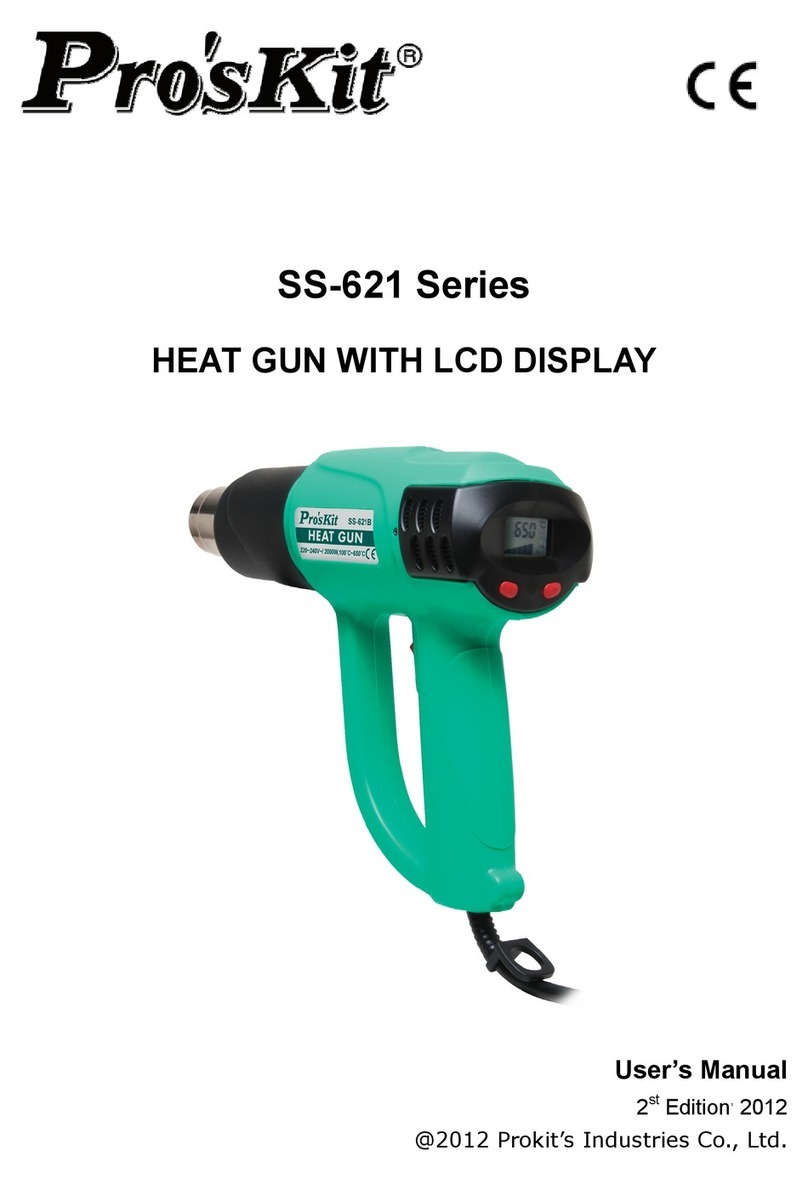
Pro's Kit
Pro's Kit Pro'sKt SS-621 Series user manual
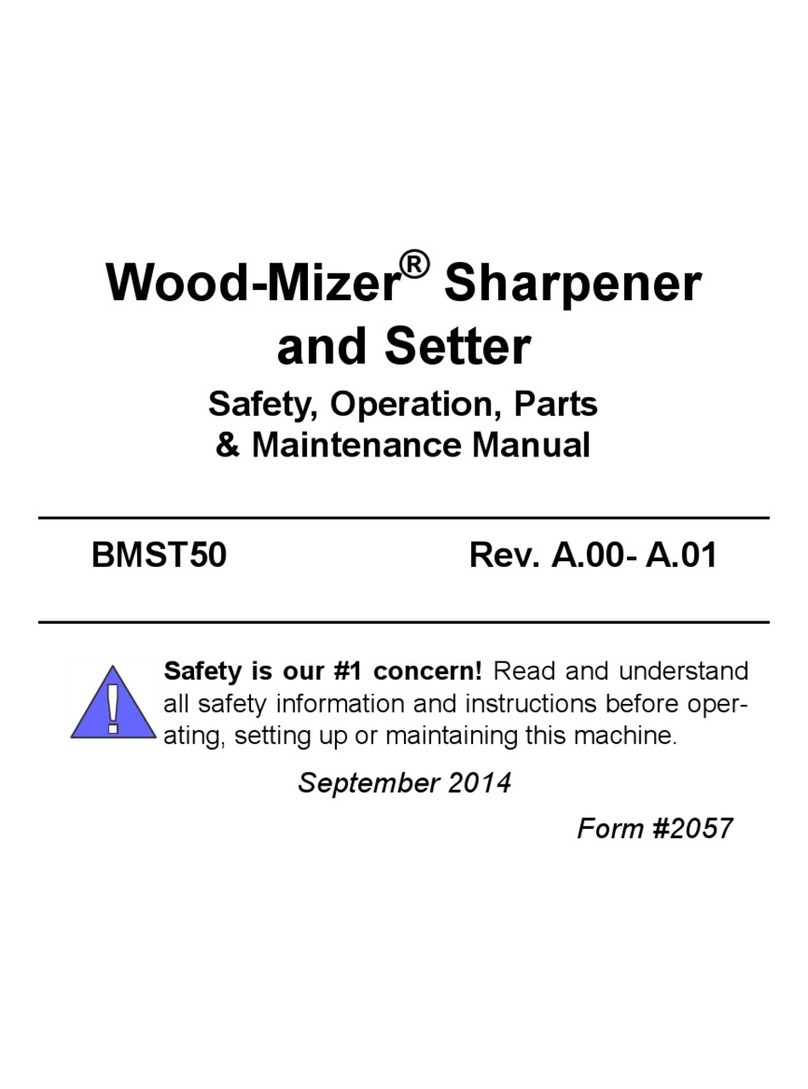
woodmizer
woodmizer BMST50 Series Safety, operation and maintenance instructions
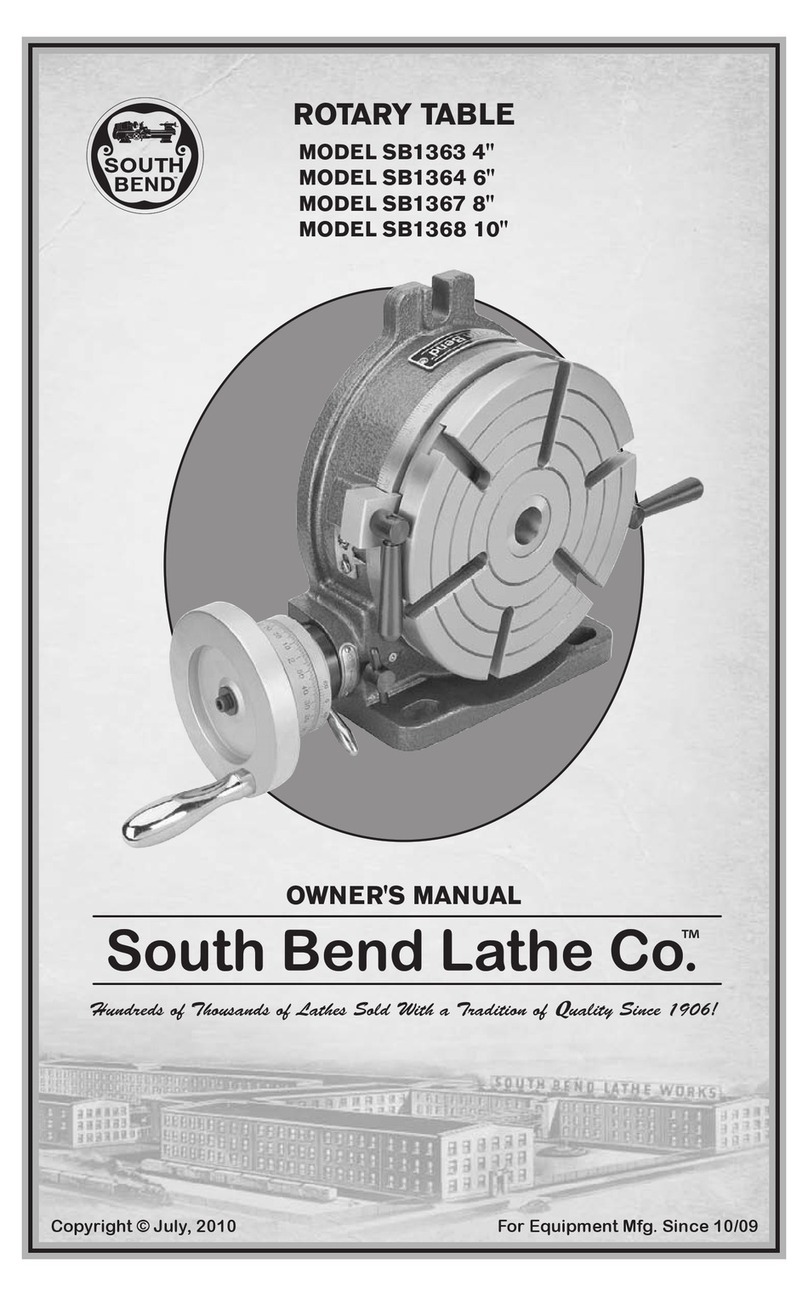
Southbend
Southbend SB1363 owner's manual
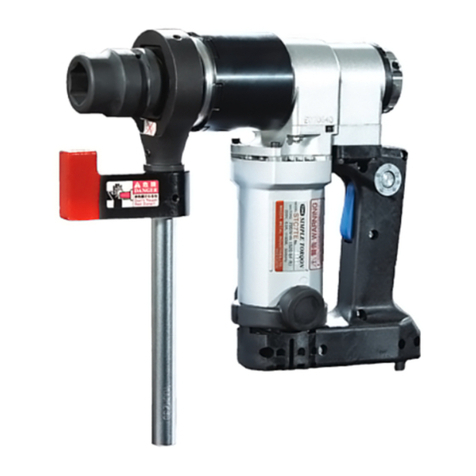
Tone
Tone GNB31E-CE instruction manual

Swisstech
Swisstech Mega-Max 15-in-1 quick start guide

Far Tools
Far Tools PM 550T Original manual translation

Far Tools
Far Tools REX 200 Original manual translation
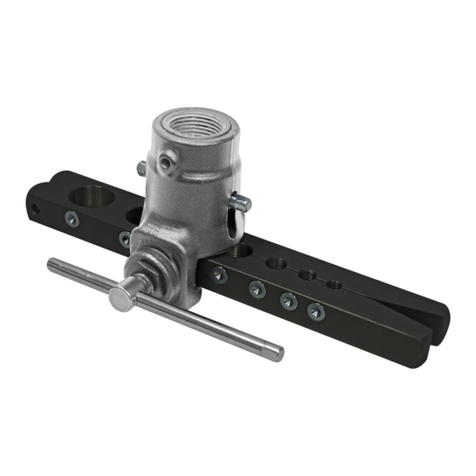
Master cool
Master cool 71680 instruction manual
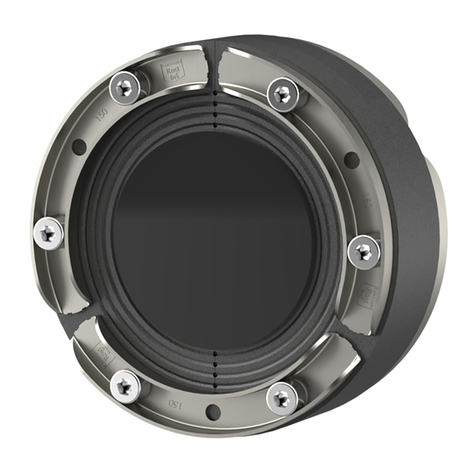
Haufftechnik
Haufftechnik HSD SSG Series Assembly instruction
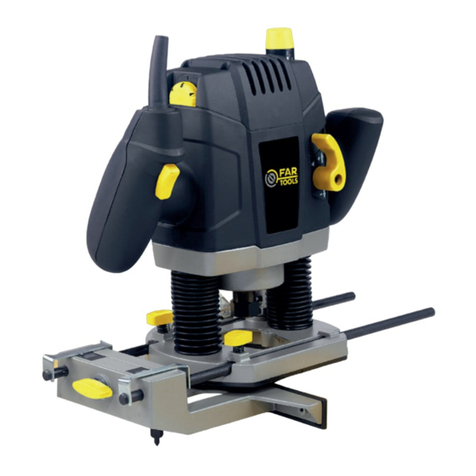
Far Tools
Far Tools ER 1300 Original manual translation
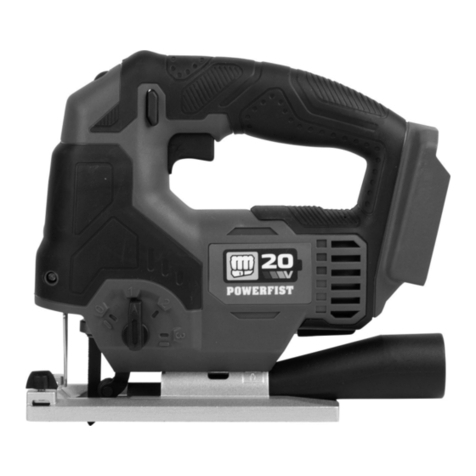
Power Fist
Power Fist 9049040 manual

Traditional Tool Repair
Traditional Tool Repair P330 Operation manual & spare parts list

